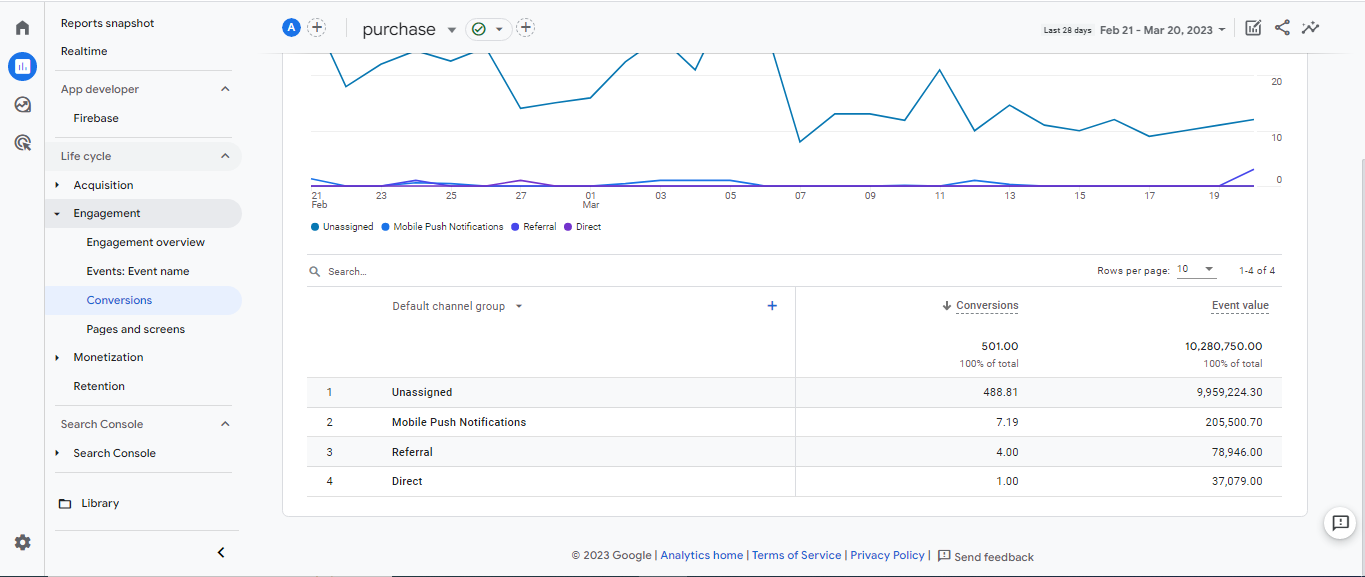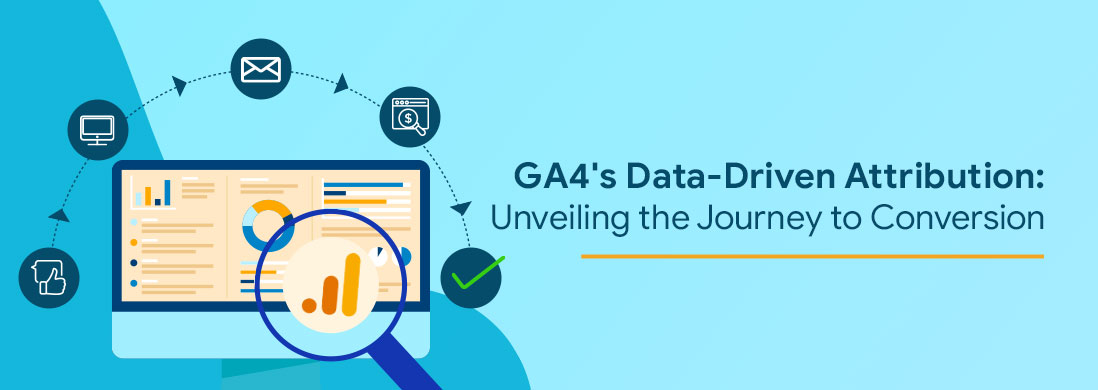With each day passing on, there are some new and exciting updates regarding GA4 capabilities. First, If you haven’t yet implemented GA4, you’ll want to do it ASAP as Universal Analytics will stop processing new data after Jun 20, 2023.
GA4 Data-Driven Attribution Model is one of the key additions to its expanded features. In our last blog, we have already covered how data-driven attribution is helping marketers to understand their campaign performance.
With the spotlight, data-driven attribution in GA4 is a dynamic attribution model that considers users’ journeys and attributes after evaluating both converting and non-converting paths. With the help of this, businesses are receiving more actionable insights about their marketing campaigns, giving a broader view of which channels are contributing to the conversions.
Data-driven attribution in GA4: How it works?
In our previous blog, we had an example where John is a prospective customer looking to buy a new T-shirt.
In this journey, John’s path to conversion was:
- Organic Search
- Paid Search
- Display Remarketing
- Shopping Ads
To assign credit to these channels, Google’s machine-learning algorithm will consider similar paths to conversion and calculate how crucial every channel is to play a role in the conversion. Hence, the model will consider the total converted users where these channels are included.
For example, If It needs to assign distributed credit to shopping ads. It will consider multiple paths.
Path A: Organic Search > Paid Search > Display Remarketing
Path B: Organic Search > Paid Search > Display Remarketing > Shopping Ads
Here, If the conversion probability of users following Path A is 2% and those who are following Path B is 8%, Shopping Ads might receive a larger share of credit than other channels within the path and vice versa.
With the help of data-driven attribution, Marketers and Businesses will be able to understand which channels are influencing the users to convert. Compared with all the rule-based models, data-driven attribution looks at the entire journey that leads a user to convert and allocates credit to each step in that journey.
How dynamic reporting in GA4 is getting more insightful with data-driven attribution?
Earlier in Universal Analytics, It was quite simple to refer to Source/ Medium and Channels for conversions. The same is true for GA4, but with some additional features that are helpful in deriving useful insights.
In GA4, there are three types for each of these dimensions. each of these types has a different scope and will provide different information.
- First user default channel group: This is the first touchpoint the user ever came across. If a user lands on your website via organic search, their first channel will always remain Organic Search. The first user default channel group is the default traffic dimension in the User acquisition report.

This report will assign revenue credit (100%) to the first touchpoint and as the name suggests, It will remain the same regardless of which attribution model is getting selected for reporting attribution model.
- Session default channel group: This assigns 100% credit to the channel that is initiating a session where conversion is happening and It won’t get impacted by the attribution model that is selected for reporting attribution model. This is the default dimension in the Traffic acquisition report.

This report will assign revenue credit (100%) to the touchpoint through which the session where the user is converted has been initiated.
- Default channel group: This dimension is completely event-based and will assign credit on the basis of the attribution model selected in GA4.In the screenshot, the conversions are decimal, as the same has been assigned credit via a data-driven attribution model.

All these dimensions will give you different data and different insights. In the case of our example,
| Channels | ||||
| Dimension | Organic Search | Paid Search | Display Remarketing | Shopping Ads |
| First user Default channel-group | 100% | – | – | – |
| Session Default channel-group | – | – | – | 100% |
| Default channel-group | 20% | 15% | 35% | 30% |
As a thumb rule, You can consider the below definitions for these dimensions:
- First user Default channel-group – The first channel of the user which will never change.
- Session Default channel group – The channel through which the user has initiated the session, which will change as and when he interacts with any other channel.
- Default channel group – The channel where you would find changes in assigning credit on the basis of the attribution model selected.
Conclusive Thoughts
There is no doubt that Google’s data-driven attribution is helping marketers to understand those key channels that were otherwise unnoticed. It not only sustains the traditional last click and first click but also enhances the overall reporting of conversions.
With its uniqueness, the data-driven attribution model will help you identify those campaigns that are actually convincing the users to get converted, and It might not be the first or last touch points that the users come across. So, It’s the best time to shift your focus to GA4!!



